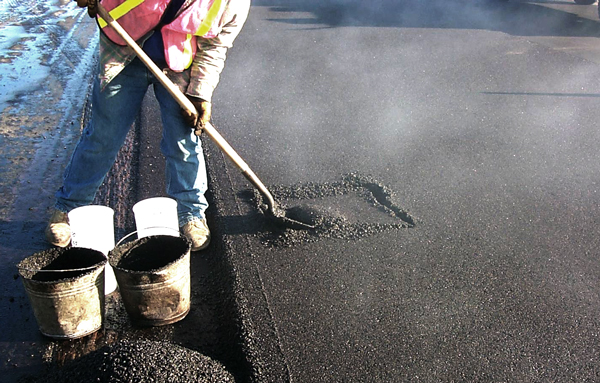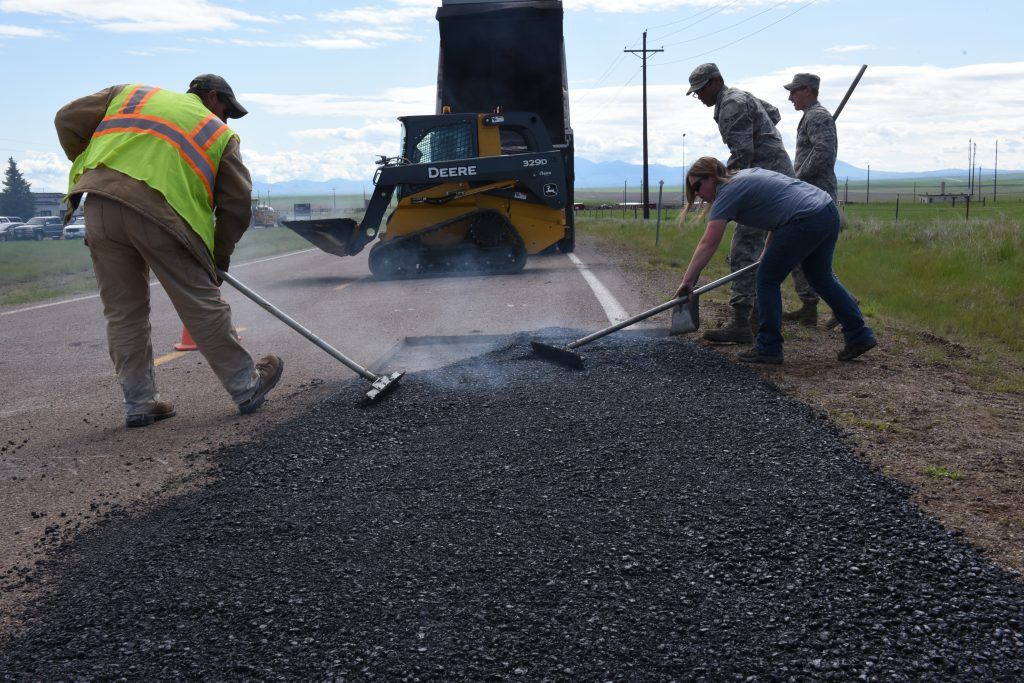Hot Mix Asphalt Paving: Elevating Commercial Parking Lot Standards
Hot Mix Asphalt Paving: Elevating Commercial Parking Lot Standards
Blog Article
Opening the Keys of Warm Mix Asphalt Technology
Discovering the midsts of warm mix asphalt technology uncovers a globe where exact formulations and thorough processes merge to shape our roadways and facilities. The fusion of fillers, aggregates, and binders isn't simply a building and construction job however a calculated orchestration of resilience and effectiveness. As we peer right into the intricate dancing of components, a tapestry of strength and sustainability unfolds. What exists below this surface of asphaltic mastery, and what keys wait to be revealed in the world of paving innovations?
Importance of Warm Mix Asphalt
Warm Mix Asphalt plays a crucial role in modern facilities development due to its longevity and cost-effectiveness. As the most generally utilized leading material for roads, freeways, and auto parking lots, Hot Mix Asphalt supplies a range of advantages that add to its significance in building and construction projects. One crucial benefit is its ability to stand up to rush hour tons and rough climate condition, giving a lasting and trustworthy surface area for transport networks. Additionally, Hot Mix Asphalt is affordable in both first construction and long-term maintenance, making it a favored choice for numerous facilities jobs.
The durability of Warm Mix Asphalt stems from its make-up, which includes aggregates, binder, and filler products that are thoroughly selected and blended to meet details performance requirements. On the whole, the significance of Warm Mix Asphalt in facilities development can not be underrated, as it continues to be a keystone of contemporary building and construction methods.
Components of Asphalt Mixes
The make-up of asphalt mixes contains thoroughly picked aggregates, binder, and filler products that are important for attaining particular efficiency requirements. Accumulations are the primary element of asphalt blends, supplying strength and stability. These accumulations can be natural, such as crushed rock or crushed rock, or synthetic, like recycled products from old pavements. The binder, typically asphalt or asphalt concrete, holds the accumulations together and supplies flexibility and durability to the mix. The option of the binder is vital as it directly affects the mix's performance in various climate condition. Fillers, such as hydrated lime or Rose city cement, are made use of to improve the mix's workability and aging resistance. Angled Parking.
The mix and percentage of these parts play a significant role in identifying the high quality and efficiency of the asphalt mix. Designers very carefully develop the mix to satisfy particular demands, thinking about aspects like web traffic volume, climate conditions, and pavement lifespan. Correct option and harmonizing of accumulations, binder, and fillers are necessary for developing long lasting, resilient asphalt sidewalks.
Mixing and Production Techniques

As soon as the aggregates are chosen, the binder, usually asphalt concrete, is included to bind the materials together. The binder's quality and amount considerably affect the mix's stamina, resistance, and versatility to environmental elements. Furthermore, fillers like hydrated lime or Rose city concrete might be integrated to enhance specific characteristics of the asphalt mix, such as its workability or dampness resistance.
Throughout manufacturing, the aggregates and binder are heated, typically in between 250-325 ° F(121-163 ° C ), to assist in mixing and make sure correct finish of the aggregates. The mixing procedure should be extensive to achieve an uniform blend that promotes the wanted efficiency qualities of the asphalt. Various strategies, such as batch blending or drum mixing, are employed to accomplish consistent and high-quality asphalt mixes for building and construction jobs.
Factors Influencing Asphalt Performance
Variables influencing asphalt efficiency include a variety of variables our website that affect the resilience, long life, and general top quality of asphalt pavements. One key variable is the high quality of products used in the asphalt mix. The kind and resource of aggregates, the binder top quality, and the additives all play a substantial role in figuring out the performance of the asphalt pavement. The rank of aggregates is vital as it influences the mix's resistance, workability, and security to breaking and rutting.

Environmental problems also influence asphalt efficiency. Temperature variants, moisture infiltration, and website traffic loads can all influence the structural stability of the sidewalk. Style factors to consider, such as pavement thickness and water drainage, are important in making sure the long-term performance of the asphalt sidewalk. By thoroughly thinking about these engineers, specialists and variables can maximize asphalt efficiency and enhance the service life of pavements.
Lasting Practices in Asphalt Technology

WMA permits for the manufacturing and placement of asphalt mixes at reduced temperature levels contrasted to standard hot-mix asphalt, resulting in decreased energy intake and greenhouse gas discharges. The usage of porous asphalt blends can assist mitigate stormwater overflow concerns by allowing water to infiltrate via the pavement and right into the ground, advertising natural water filtering and reenergize procedures.
Conclusion
Finally, hot mix asphalt technology plays a critical role in modern infrastructure advancement because of its longevity and cost-effectiveness. By thoroughly balancing elements, utilizing appropriate blending techniques, and considering different variables, designers can produce top quality asphalt blends that withstand hefty website traffic lots and harsh weather. Embracing sustainable methods, such as making use of warm-mix innovations and recycled products, additionally enhances the environmental kindness of asphalt innovation.
Mixing and production techniques in hot mix asphalt modern technology include the exact combination and processing of accumulations, binder, and fillers to develop a high-performance and sturdy asphalt mix.Factors affecting asphalt performance incorporate a range of variables that impact the toughness, long life, and overall high quality of asphalt sidewalks. Sustainable techniques in asphalt technology incorporate various initiatives aimed at lowering the ecological effect of asphalt production and paving procedures. By integrating reclaimed asphalt pavement (RAP) and recycled asphalt tiles (RAS) into new asphalt mixes, the industry can dramatically decrease the intake of raw materials and energy, while likewise decreasing landfill waste.
WMA allows for the manufacturing and positioning of asphalt mixes at reduced temperature levels compared my review here to traditional hot-mix asphalt, resulting in lowered power intake and greenhouse gas discharges.
Report this page